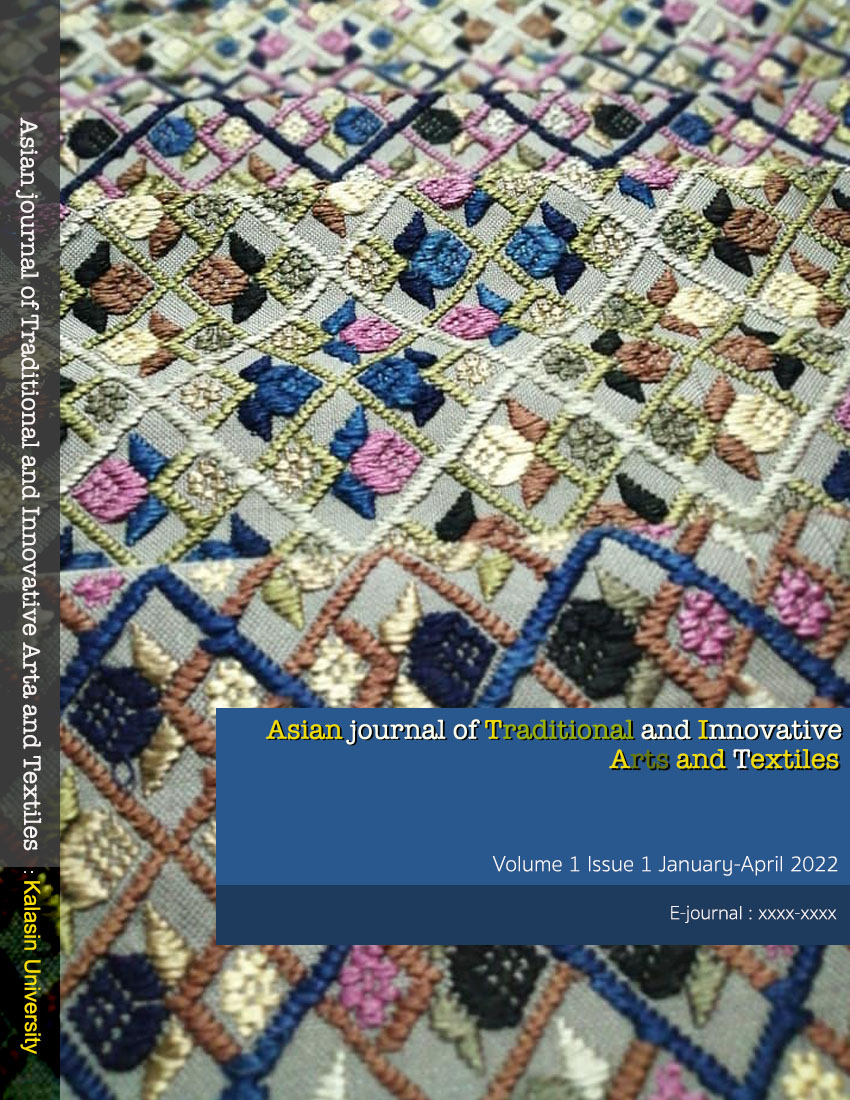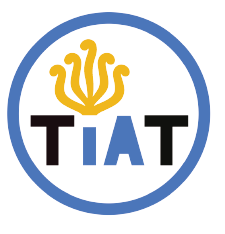Creation of digital painting reflecting the traditional Chinese New Year in Buriram.
Keywords:
Creation, Digital paintings , Traditions, Chinese new yearAbstract
The article titled ‘Creation of digital painting reflecting the traditional Chinese New Year in Buriram Province’ based on the creative research in which the key objective was to create digital paintings inspired by the traditional Chinese New Year in Buriram Province. The methodology primarily carried out by collecting information related to Chinese New Year traditions followed by creation of digital paintings in Adobe Photoshop CS6 works. The digital paintings finalized by experts’ assessment and analyzed the aspiration of creations.The result of the research revealed in the creation of digital paintings reflecting the Chinese New Year tradition in Buriram presenting in 5 images, size 60x80 centimeters. In the committee’s assessment, the highlight of creation is interesting, colorful and unique. The digital paintings achieved the aspiration to enrich Thais to comprehend Chinese New Year tradition in refreshing views. The digital paintings as well enable the traditional concepts to reach and encouraged Thai youths to learn and understand traditional stories. The points needed to be developed are the overall detail of the images and the anatomy structure of the portrait. Next creation could be included more background and history studies and considered various Thai traditions presenting in digital creation as gorgeous, appealing paintings with artistic value introduced into contemporary Thai society.
References
จรรยา เหลียวตระกูล. (2559). การสืบทอดอัตลักษณ์ชาวไทยเชื้อสายจีนที่สะท้อนผ่านประเพณี ตรุษจีน ในรอบหนึ่งศตวรรษ. วารสารนิเทศศาสตร์ธุรกิจบัณฑิตย์. 10(1), 11-38.
ชลูด นิ่มเสมอ. (2557). องค์ประกอบของศิลปะ. (พิมพ์ครั้งที่ 9). กรุงเทพฯ : สำนักพิมพ์อัมรินทร์.
ตั้งกวงจือ. (2549). ตำราเรียนหัวใจฮวงจุ้ย. กรุงเทพฯ : สำนักพิมพ์ฮวงจุ้ยกับชีวิต.
เธียรชัย เอี่ยมวรเมธ. (2541). ความเป็นมาประเพณีตรุษจีน. กรุงเทพฯ : รวมสาส์น.
นภัสสรณ์ เหลืองศักดิ์ศรี. (2562). ประเพณีการไหว้ในเทศกาลตรุษจีน: ที่มา ความหมาย และการเปลี่ยนแปลง. วารสารสถาบันวิจัยและพัฒนา มหาวิทยาลัยราชภัฏมหาสารคาม. 6(1), 383-394.
ประกอบ แซ่โล้. วันที่ 15 ธันวาคม 2563. สัมภาษณ์. (อาชีพค้าขายในอำเภอคูเมือง จังหวัดบุรีรัมย์).
วรากร ใช้เทียมวงศ์. (2565). การสร้างสรรค์ผลงานจิตรกรรมดิจิทัลแนวการ์ตูนญี่ปุ่นด้วยแท็บเล็ทดิจิทัล. ค้นข้อมูลวันที่ 15 กุมภาพันธ์, จากhttp://www.dspace.spu.ac.th/bitstream/123456789/6153/1/kds2018_proceeding_warakorn.pdf.
วันทนีย์ กุลศิริโรจน์. วันที่ 8 มกราคม 2564. สัมภาษณ์. (เจ้าหน้าที่ฝ่ายพิธี. มูลนิธิสว่างจรรยาธรรมสถาน อำเภอเมือง จังหวัดบุรีรัมย์).
สุริยะ ฉายะเจริญ. (2562). การสร้างสรรค์วาดเส้น จิตรกรรม และจิตรกรรมดิจิทัล ชุด “วัดเซนโซจิ 2018”. วารสารนิเทศสยามปริทัศน์. 18(24), 153-159.
Yang Chen. (2561). HELLOWORLD 2.0 การประยุกต์ใช้เทคโนโลยีความเป็นจริงเสมือนในงานจิตรกรรมดิจิทัล. ปริญญาศิลปกรรมศาสตรมหาบัณฑิต สาขาวิชาทัศนศิลป์และการออกแบบ คณะศิลปกรรมศาสตร์ มหาวิทยาลัยบูรพา.
Downloads
Published
How to Cite
Issue
Section
License
Copyright (c) 2022 Asian Journal of Traditional and Innovative Arts and Textiles

This work is licensed under a Creative Commons Attribution-NonCommercial-NoDerivatives 4.0 International License.





